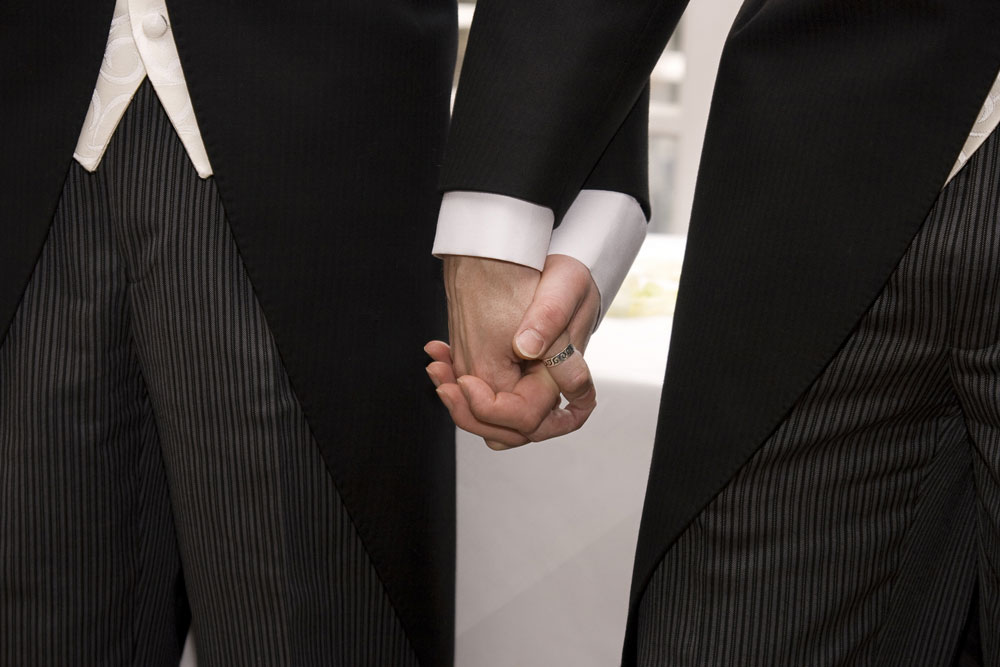Same-Sex Marriage Linked to Longer Lives

Since the advent of same-sex marriage in Denmark, married gay men and women have seen their death rates drop, a new study finds.
The research fits well with other studies that have linked health and marriage among opposite-sex couples. Men in same-sex couples now have lower mortality rates than unmarried or divorced men, with only men in opposite-sex marriages living longer.
"Among men in Denmark, it is more dangerous to be unmarried or divorced than to be married to another man," said study researcher Martin Frisch of the Statens Serum Institute in Copenhagen and the Center for Sexology Research of Aalborg University.
Tracking health
Denmark was the first nation in the world to legalize same-sex marriage, doing so in 1989. That length of time provides a unique advantage for researchers looking at the effects of legalized marriage, Frisch told LiveScience.
In the United States, same-sex marriage is now legal in the District of Columbia and nine states (Connecticut, Iowa, Maine, Maryland, Massachusetts, New Hampshire, New York, Vermont and Washington). The federal government does not recognize these unions.
Frisch and his colleagues used data from the country's Civil Registration System, which is used to issue citizens identification numbers (similar to Social Security numbers) and contains basic demographic information, including marital status and death dates. This database gave them information on 6.5 million Danes between 1982 and 2011.
Get the world’s most fascinating discoveries delivered straight to your inbox.
During the study period, about 1.7 million of the people in the registry died, allowing the researchers to calculate mortality rates for the 29-year period. Controlling for education, income, city and population density, the researchers found that marriage made a difference.
Men and women in opposite-sex marriages had the lowest mortality rates of any other group in the study, including people who were widowed, divorced or unmarried. Female widows and divorcees were about 1.4 and 1.6 times more likely to die during the study period than those who were married to a man, respectively, and mortality rates for unmarried women rose slightly between 1982 and 2011, from 1.5 to 1.7 times more likely to die than married women.
Male widowers were 1.4 times more likely to die than men in opposite-sex marriages as of 2011, a slight increase from 1.2 in 1982. Men who were divorced also saw their chance of mortality go up over the study period, from 1.3 to 1.7 times more likely to die than married men. For unmarried men, the same numbers rose from 1.2 to 1.7 between 1982 and 2011.
Same-sex marriage and survival
Starting in 1989, when same-sex marriage was introduced, mortality rates among gays and lesbians who got married have declined. As of 2011, men in same-sex marriages were only 1.4 times more likely to die during the study period than men in opposite-sex marriages, a number lower than unmarried or divorced men. [5 Myths About Gay People Debunked]
Part of the mortality drop likely has to do with the development of antiretroviral therapies to treat HIV and AIDS, Fisch said. The syndrome affects gay men disproportionately, but drug therapies have been available since 1995 and 1996. As a result, gay men went from the group with the highest mortality rates to the group with the second-lowest, behind only men married to women.
Married lesbians also saw their mortality rates decline between 1989 and 2011, Frisch said, but not as dramatically.
"Since the year 2000, same-sex married Danish lesbians have had mortality rates that are almost 90 percent higher than opposite-sex women in Denmark," he said. Their mortality rates may even be increasing, he added.
Based on data about causes of death, the researchers think that an increased suicide risk among Danish lesbians explains a large part of their mortality lag. Married lesbians were more than six times more likely to commit suicide than married straight women. They were also at a 60 percent increased risk of death from cancer, for reasons not yet understood.
On one hand, the study reveals that mortality rates are not necessarily elevated in gay men, despite many studies finding disproportionate physical and mental health struggles among this group (often associated with social stigma). Marriage may protect against the societal challenges of being gay, or healthier gay men may be more likely to enter marriages.
On the other hand, Frisch said, the data suggest that men and women who are gay still struggle more than their straight counterparts. Both same-sex-married men and women had elevated suicide rates over straight-married couples, he said.
"It is important now to identify those factors that make more homosexuals than heterosexuals vulnerable to life's challenges to such an extent that suicide may appear to be the only way out," Frisch said.
The researchers report their findings online today (March 11) in the International Journal of Epidemiology.
Follow Stephanie Pappas @sipappas. Follow LiveScience on Twitter @livescience, Facebook or Google+. Original article on LiveScience.com.

Stephanie Pappas is a contributing writer for Live Science, covering topics ranging from geoscience to archaeology to the human brain and behavior. She was previously a senior writer for Live Science but is now a freelancer based in Denver, Colorado, and regularly contributes to Scientific American and The Monitor, the monthly magazine of the American Psychological Association. Stephanie received a bachelor's degree in psychology from the University of South Carolina and a graduate certificate in science communication from the University of California, Santa Cruz.


